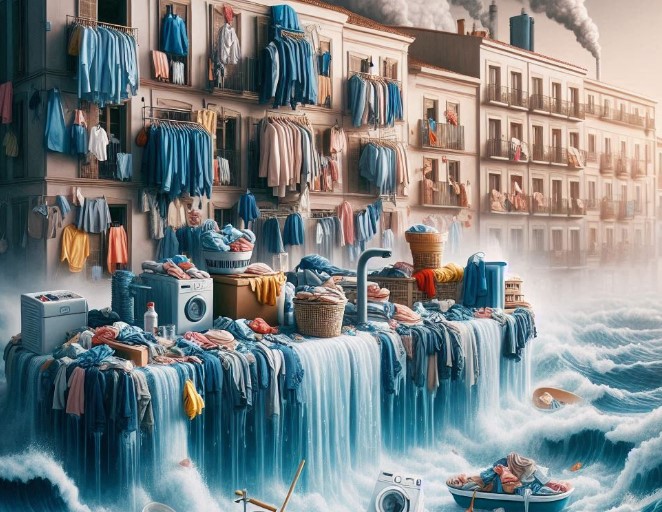The water footprint of the clothing stored by Spanish citizens is nearly 679,000 liters per closet. This highlights the enormous amount of water required to produce these clothes, a total of 32.3 billion liters, according to a study by the company Epson.
The analysis, described as groundbreaking in a statement released Friday, examines the water footprint of fashion in eight European countries. It shows that the garments stored in the closet of an average Spanish consumer require exactly 678,963 liters of water for their production, including the manufacturing, finishing, and dyeing steps.
This figure puts Spain in fifth place in a list led by Portugal (over 817,000 liters per capita) and Italy (almost 724,000 liters). Poland (over 715,000 liters) and Germany (over 696,000 liters) are in third and fourth place.
The three countries at the bottom of the list are the Netherlands (approximately 641,000 liters), the United Kingdom (more than 634,000 liters), and France (approximately 603,000 liters).
The surveys conducted to compile the report also revealed that only 41% of the population was familiar with the concept of a “water footprint” and 72% had never considered the dyeing process.
The fashion industry contributes 2.9% to Spain’s gross domestic product (GDP) and accounts for 8.2% of total exports. It generates sales of approximately €19.8 billion per year, making it the fourth most important European market after Germany, Italy, and France.
18,000 liters of water for one pair of jeans
The study, presented just days before Madrid Fashion Week from February 19 to 23, was conducted in November 2024. It found that jeans (with an average water consumption of 18,000 liters) and sweaters (14,000 liters) are the garments that contribute most to environmental pollution in this sector. Traditional textiles generate 20% of industrial wastewater worldwide.
The dyeing process is the largest water consumer; for example, dyeing a jacket requires more than 3,300 liters, which accounts for almost half of the total water used to produce the garment.
The report, conducted with the support of the consulting firms Green Story and Censuswide, highlights that Epson, a company known for manufacturing printers and projectors, also applies its technologies to other industries such as textiles, packaging, and healthcare. This can reduce energy consumption by up to 85% and reduce ink and water waste.




